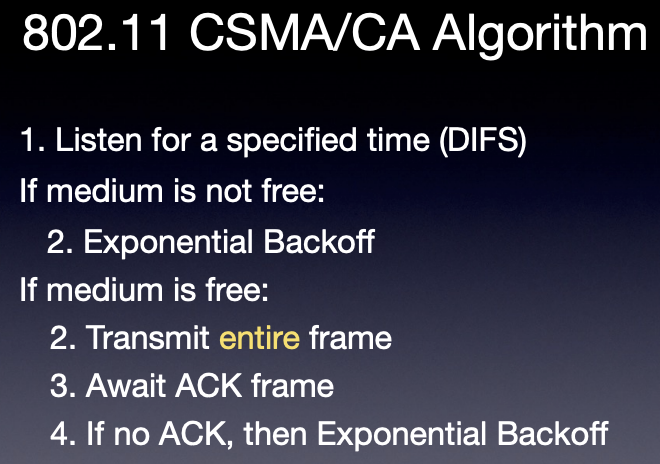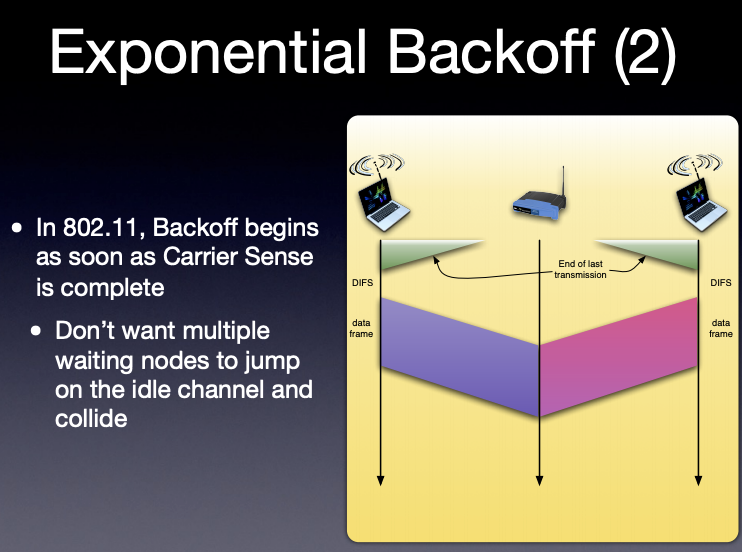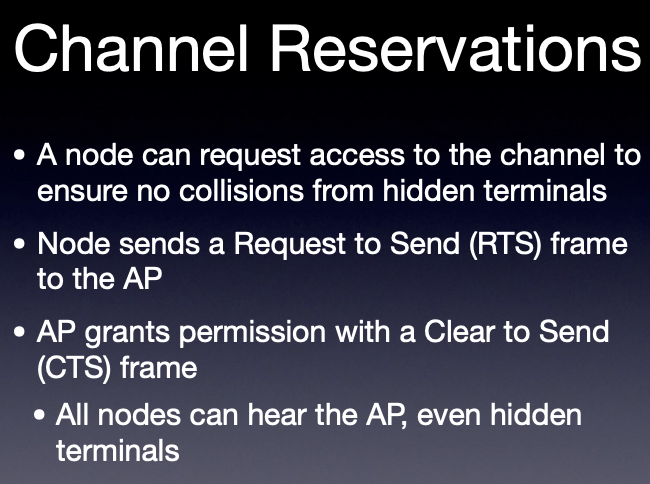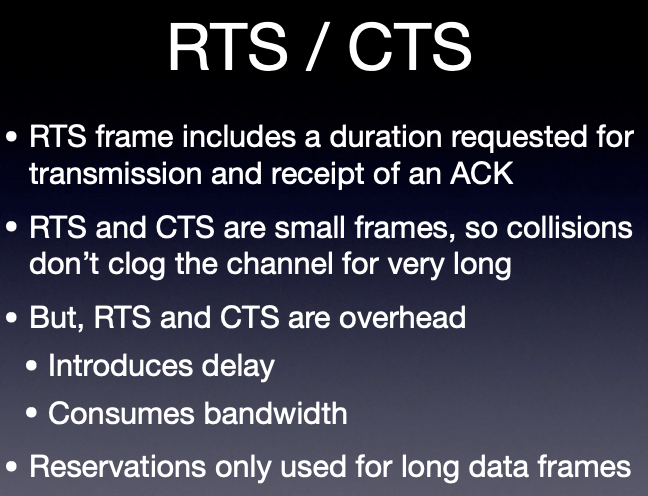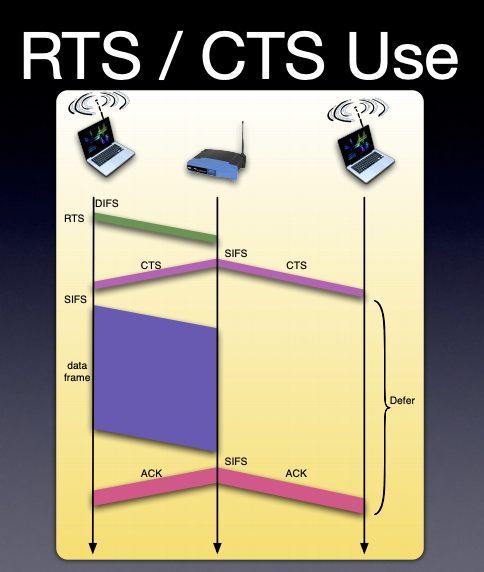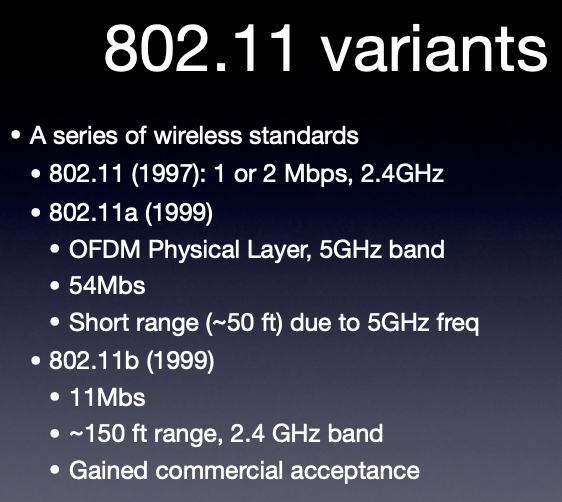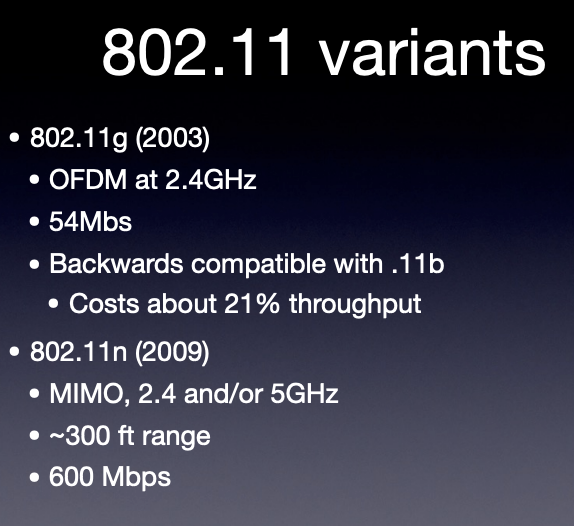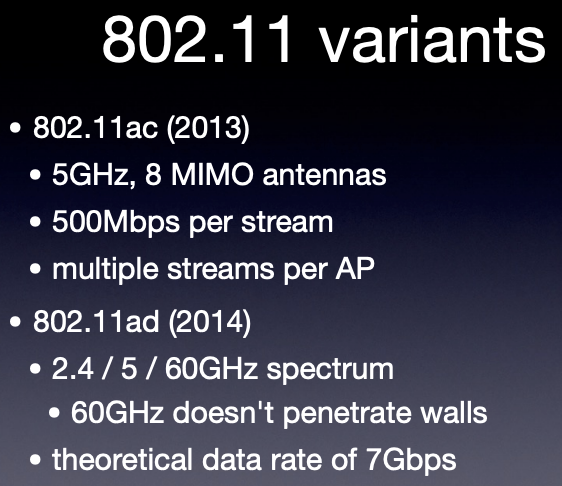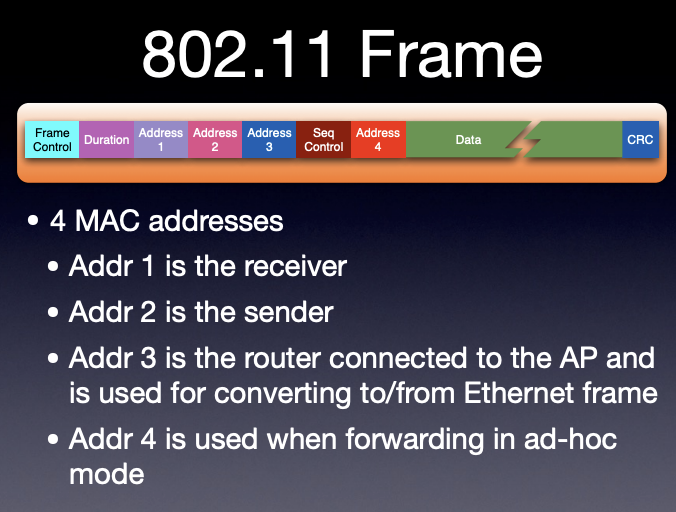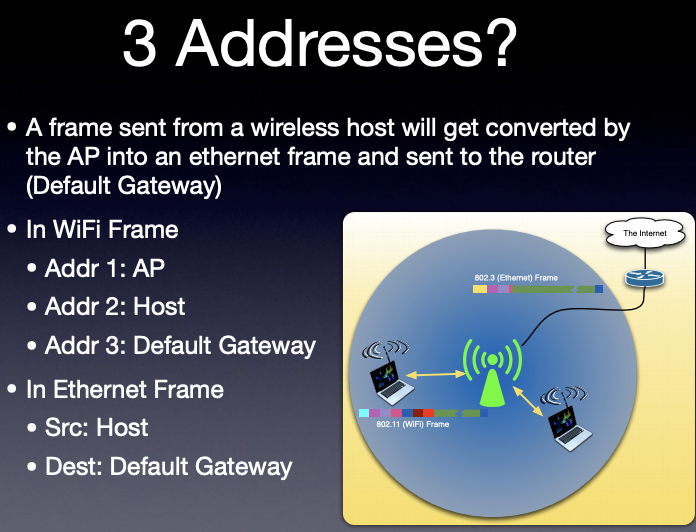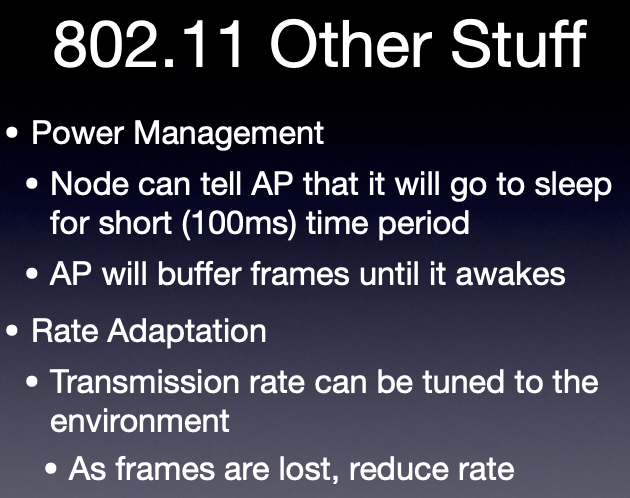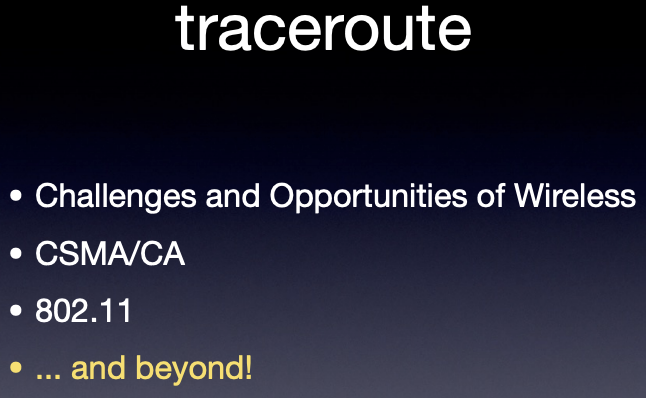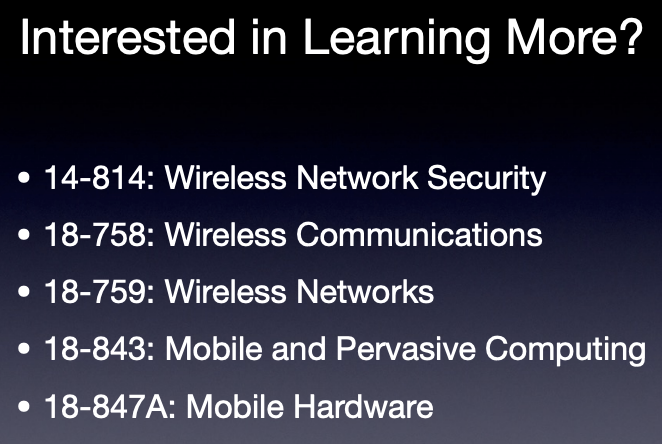The mobility provided by wireless networks has made a huge difference in the lives of most citizens of the internet. However, several challenges have to be overcome by a wireless link layer to make that promise into a reality. Primary among them is the lack of collision detection due to receiver shutdown during transmission. The hidden terminal problem also means that collisions are not apparent to all hosts on a link. This lecture will examine the collision avoidance mechanisms that are key to 802.11 wireless protocols.

The Hidden Terminal Problem
Lesson Objectives
By the end of this lesson, the student will be able to:
- explain the challenges of a wireless subnet, including those caused by range limits, mobility, receiver shutdown, noise, multi-path, hidden terminal, and exposed terminal problems.
- describe the CSMA/CA algorithm and how it helps overcomes some of the wireless challenges.
- describe the use of channel reservations to avoid collisions.
- explain some features of the 802.11 standard (do not memorize features of the variants). Such features include operating modes, security, frame format, power management and rate adaptation.
Reading
- KR 6.1 - 6.3
Slides
Due
Video


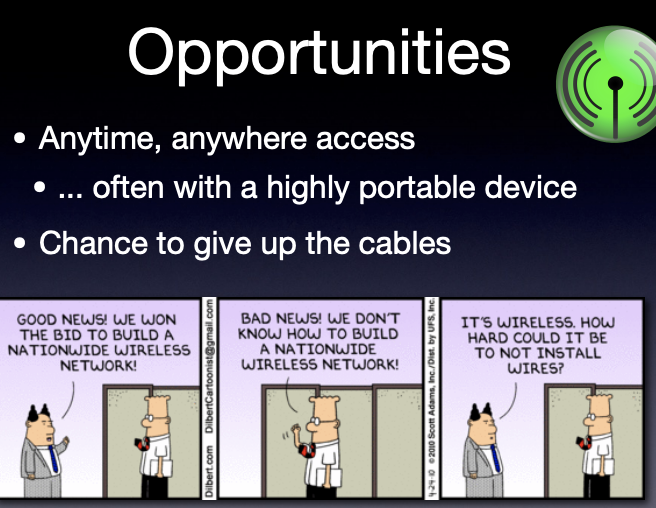

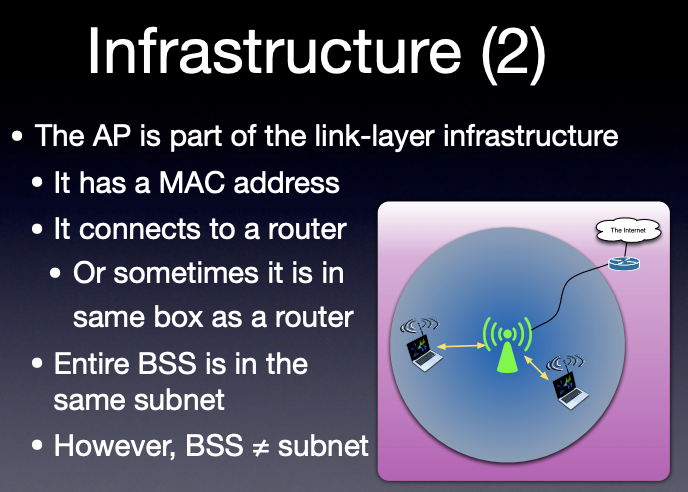
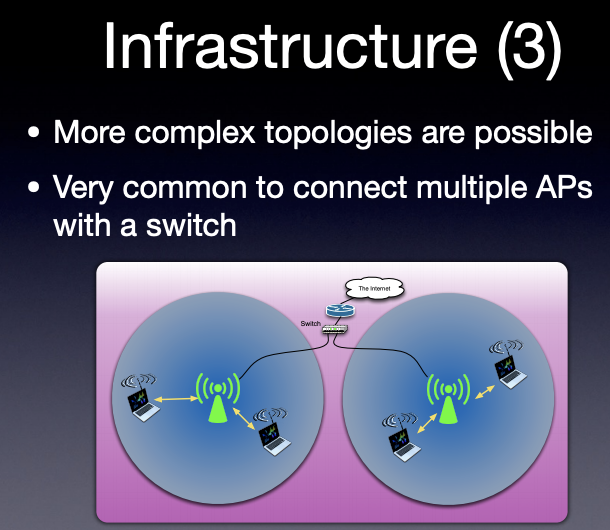
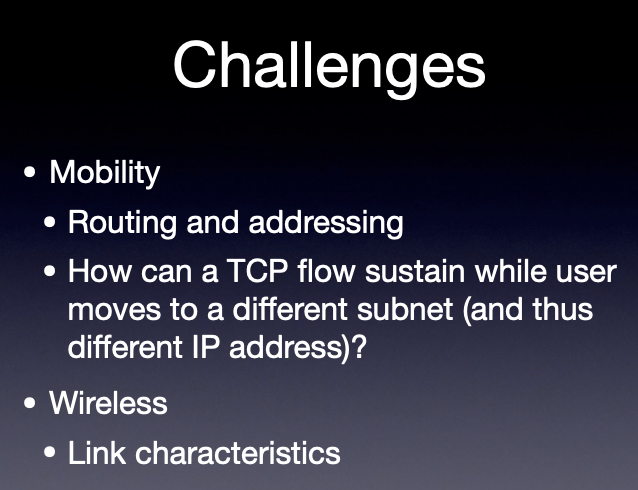
moving place but the remote server doesnt know that

Gt
Gr
Gain of transimitter or receiver
\lambda = wavelength of the signal
receiver is closed to transimitter and extreemely sensitive, due to the small number of lambda and the decaying speed
so we must shut off the receiver when transmitting signal
also in Ethernet it's easier to distinguish if the signal is sent out or received.
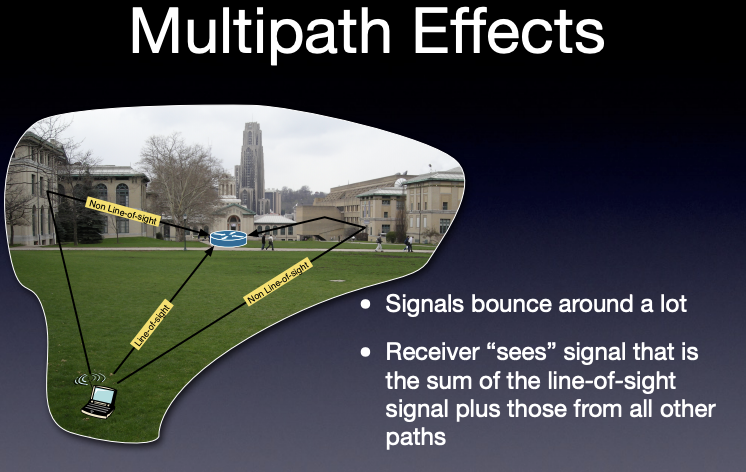
need some complex math


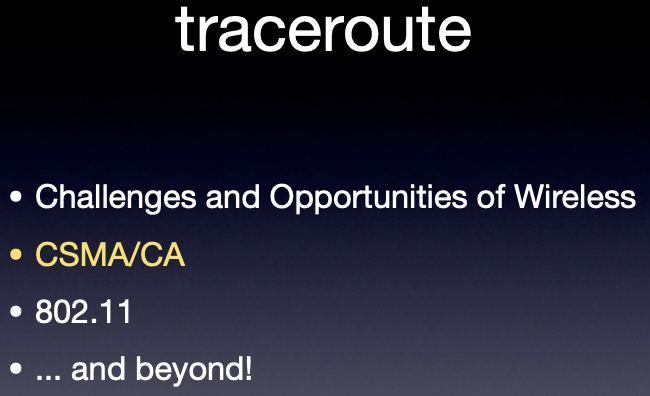

Collision avoidance => wireless
collision detection => ethernet
